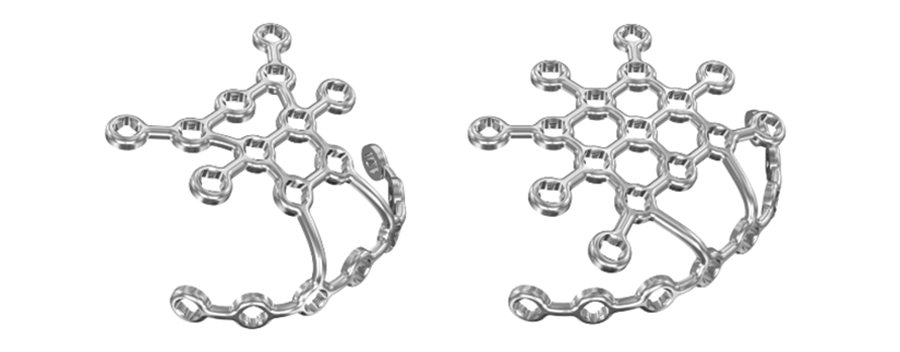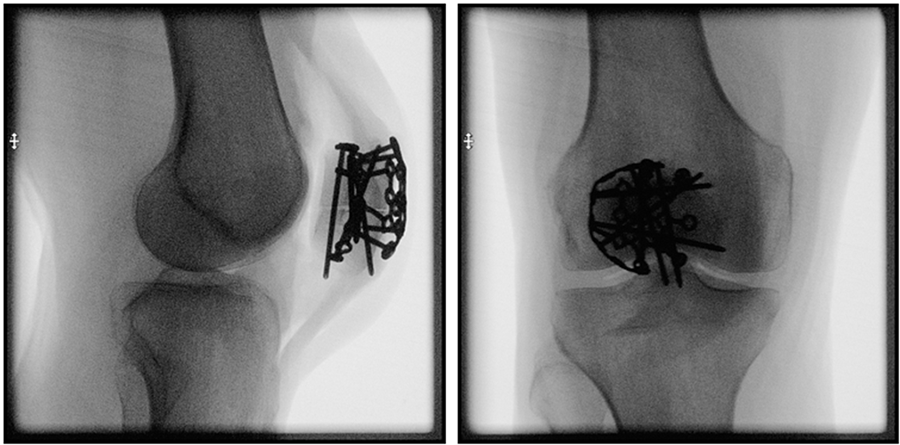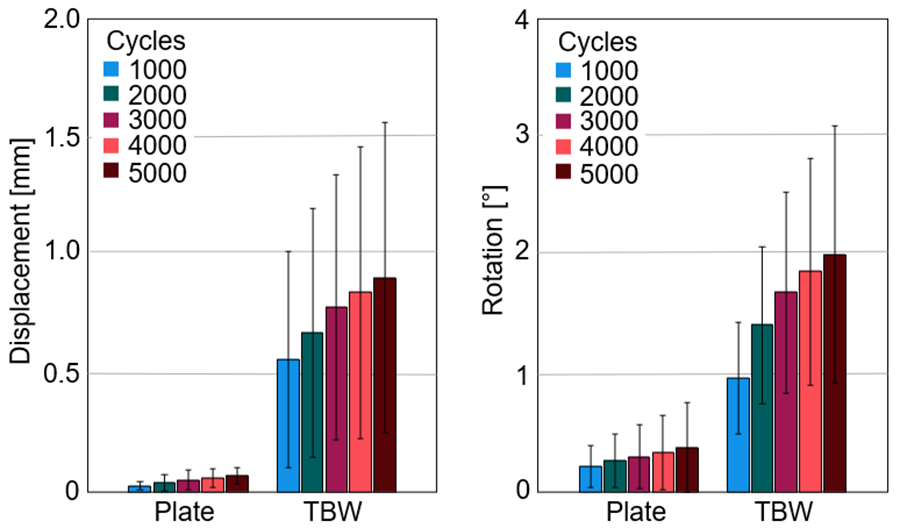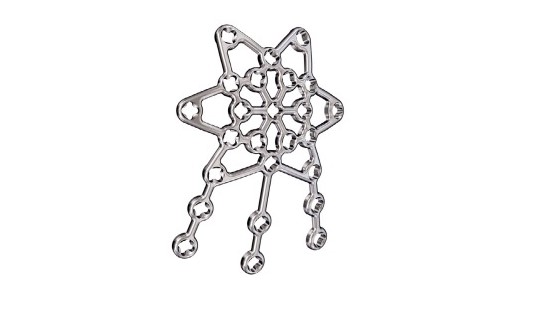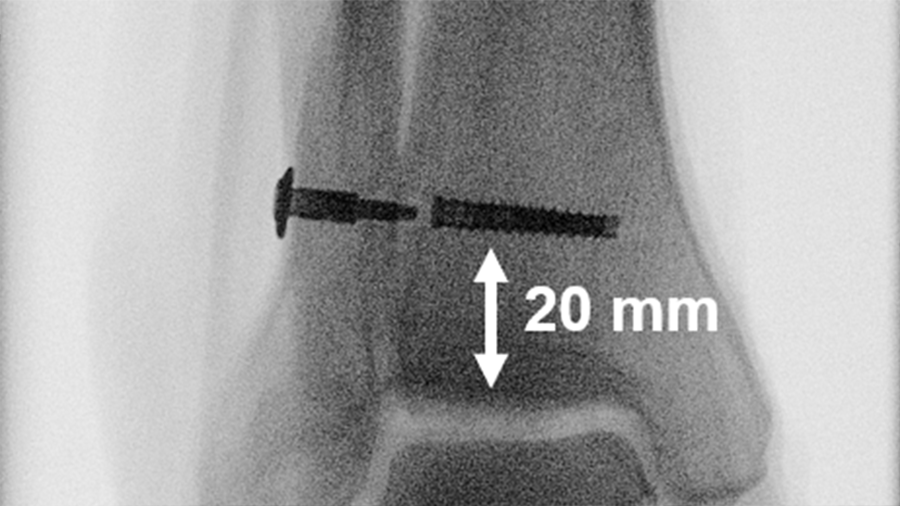
Lateral rim variable angle locked plating versus tension band wiring of simple and complex patella fractures – a biomechanical investigation
Introduction
Treatment of both simple and complex patella fractures is a challenging clinical problem. It aims to restore the integrity of the extensor mechanism and the congruity of patellofemoral joint. Controversy exists regarding the most appropriate fixation method. Tension band wiring – aiming to convert tensile forces on the anterior aspect of the patella into compression forces across the fracture site – is the standard of care; however, it is associated with high complication rates. Recently, lateral rim variable angle locking titanium and steel plates have been developed for treatment of both simple and comminuted patella fractures (Fig 1). The low-profile plates have variable angle locking holes enabling up to 15° screw angulation to target small fracture fragments and to avoid fracture lines and other implants. They allow surgeons to achieve stable fixation in simple and complex patella fractures using bicortical, interfragmentary screws in a multiplanar fashion around the rim of the patella. These plates also minimize soft-tissue irritation and can be cut and contoured with dedicated instruments according to the patient anatomy and various fracture patterns. Sutures can be placed through the plate windows to anchor soft tissues to augment the repair.
The aim of this project was to investigate the biomechanical performance of the recently developed lateral rim variable angle locking plates versus tension band wiring used for fixation of simple and complex patella fractures.
Each specimen was tested over 5000 cycles by pulling on the quadriceps tendon, simulating active knee extension and passive knee flexion within the range from 90° flexion to full knee extension. Interfragmentary movements were captured by means of motion tracking.
Results
For both fracture types, the longitudinal and shear articular displacements, measured between the proximal and distal fragments at the central aspect of the patella between 1000 and 5000 cycles, together with the relative rotations of these fragments around the mediolateral axis were all significantly smaller following the lateral rim variable angle locked plating compared with the tension band wiring (P <. 01; Fig 3).
Conclusion
From a biomechanical perspective, lateral rim locked plating of both simple and complex patella fractures provides superior construct stability versus tension band wiring.

